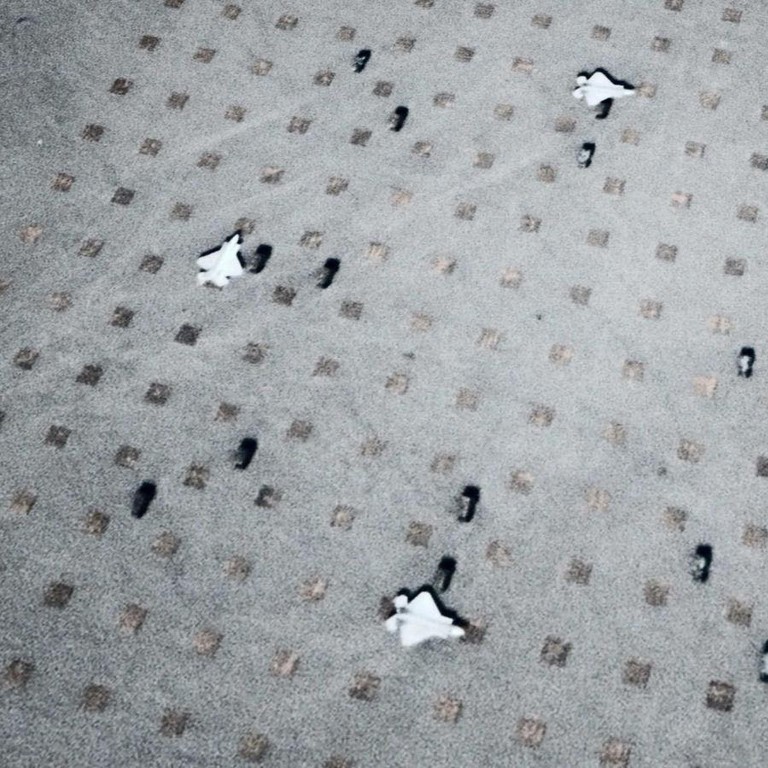
First a fake US aircraft carrier and now China has models of F-35 fighter jets
- Mock-ups of jets at a shooting range aimed at showing Chinese missiles can target US and Japan if they intervene over Taiwan, experts say
- Chinese military also has targets in shape of US aircraft carrier and other ships at the shooting range in Xinjiang
With a range of 1,000km (621 miles), the DF-16 is one of the latest Dongfeng (or Orient Express) series of medium-range ballistic missiles. Chang said China had deployed the DF-21C, with a range of 2,000km, to its northeast, a new tactic that brought all of Japan’s territory within its coverage.

01:10
China builds full-scale mock-ups of US warships in area used for missile target practice
“The Korla Shooting Range has been expanded in the past two years as the rocket force has reinforced training aimed at targets in Japan,” Chang said.
“[The mock-ups and DF-21C deployment] could be seen as the PLA’s response to American marines’ increasing deployment of more F-35Bs to their airbase in Iwakuni, while Japan’s Air Self-Defence Force also sent more F-35As to Misawa Air Base.”
Previously, simulation models of the US F-15 Eagle fighter were also seen at Korla, Chang said.
Ben Ho, a researcher on the military studies programme at Singapore’s S. Rajaratnam School of International Studies, said mock-ups of US vessels signalled Beijing’s willingness to challenge American sea power, while the F-35 models hinted that the US’ land-based air power could also be targeted by the PLA’s long-range missiles. It was also aimed at Japan.
“This is clearly part of China’s overall message of deterrence for external powers not to get involved in any regional conflict,” Ho said.
“Japanese Prime Minister Fumio Kishida, who is usually seen as a foreign policy dove, has already taken a tougher stance on China during the five-plus weeks he has been in power. Though a Taiwan contingency is likely to involve Tokyo one way or the other given its proximity to the island, the image of the F-35s will probably create some uncertainty in the Japanese calculus.”
US vs China: who has the stronger military?
A Beijing-based military insider said the F-15 mock-ups were built as ground targets for the rocket force, and could be seen as China warning countries about their stance regarding Taiwan. Beijing views the self-ruled island as its territory, to be brought into its fold by force if necessary.
“It’s training to target airbases and aircraft on runways by firing cluster munitions, which would ruin both,” said the insider, who requested anonymity.
“The ultimate goal of training is not to take action but to deter foreign forces’ attempts to intervene in the Taiwan issue.”
Chang said the PLA’s recent deployments and training indicated China was making serious war preparations as a deterrent.
“[Beijing] knows that satellites can detect its developments,” he said, adding that it was likely to step up intimidation after the Winter Olympics, which it hosts in February.
“A Chinese version of hybrid warfare is brewing, although I still rule out the possibility of large-scale conflict [over Taiwan].”

